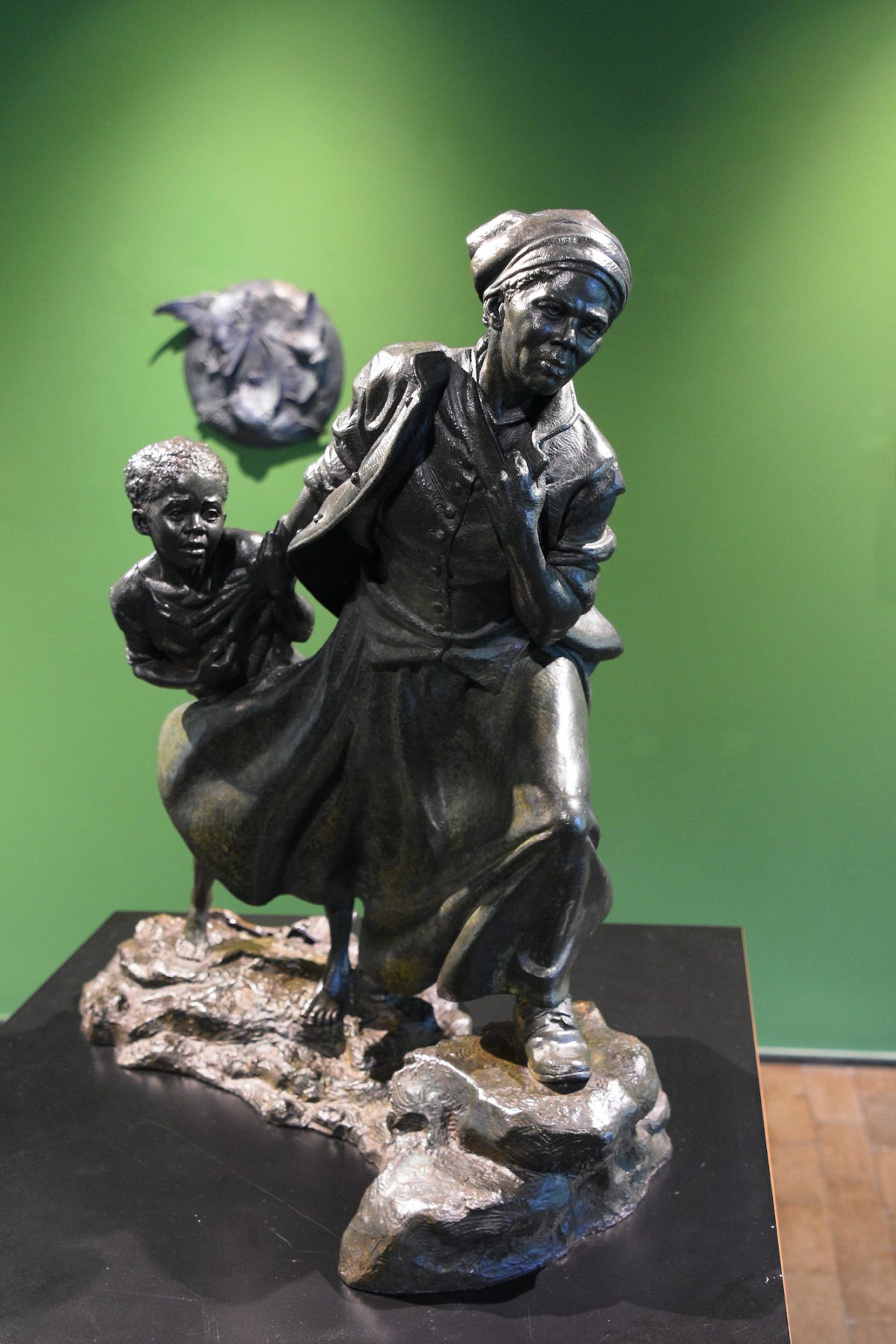

The city of Philadelphia is drawing criticism for commissioning Wesley Wofford, a White sculptor, to complete a statue of abolitionist Harriet Tubman. Set to be unveiled in fall 2023, the monument will be based on an existing sculpture by the same artist titled “Harriet Tubman: The Journey to Freedom,” which was temporarily installed outside Philadelphia’s City Hall between January and March and has traveled to ten cities thus far with twelve additional cities on the docket. But some say city officials did not do enough to solicit community feedback ahead of the commission.
Marguerite Anglin, public art director at the Philadelphia Office of Arts, Culture and the Creative Economy (OACCE), explained in a virtual public meeting on June 15 that the temporary “Journey to Freedom” sculpture had triggered such an overwhelmingly positive response that Philadelphia Mayor Jim Kenney immediately backed funding for Wofford to create a site-specific sculpture depicting Tubman. “It will represent one of the city’s first public artworks honoring a historic African-American female figure,” she said.
During the meeting — which was meant to source feedback from Philadelphians on what was most important to them about Tubman and what stories they wanted Wofford’s sculpture to tell — many lodged complaints about what they viewed as an opaque commissioning process and expressed a preference that the artist be Black.
“I’m not in support of this artist doing the work. Nothing personal against him, but just the fact that I think it should be an African American doing this work,” said Leslie Garrett, a participant who spoke out during the discussion session of the meeting. In response, Anglin stressed that the city’s process usually involves putting out an open call for submissions, during the course of which underrepresented artists are prioritized — but that this public art commission was an exception, due to the “outpouring of love” for the temporary sculpture.
“Right or wrong, we feel like it would be inappropriate for us to hire another artist — hire a Black artist, or a different artist — to recreate the expression of another artist,” Anglin said.
When asked for his response during the meeting, Wofford said that “the Underground Railroad was a biracial endeavor” while acknowledging that both artists of color are underrepresented in public statuary and that monuments overwhelmingly continue to portray white military men.
But Wofford’s response promptly inspired rebukes from citizens at the meeting, one of whom pointed out that the Underground Railroad was primarily a struggle borne by Black people. “When a sculptor’s up there on that ladder, either carving or doing the clay work, it is very important for us as Black people to see that process take place, especially amongst the young people to inspire them to do those kinds of processes — to be sculptors, to be monument makers,” Ogundipe Fayomi, another contributor, remarked.
At some points, the meeting became directly confrontational, with some participants pointedly directing their questions at Wofford. “If you think or agree with your words, not verbatim, that there should be equity in terms of Black artists or other artists, what could you do? Courageously, what could you do? You might have to sit with that,” Dee Jones said, suggesting that Wofford should walk away from the project.
“Nana Harriet risked life and limb to be free so that no one White person would benefit off her person. And now we have someone white benefiting off of her,” Maisha Sullivan-Ongoza, a public artist herself and a member of a collective called Celebrating the Legacy of Nana Harriet Tubman — formed to mobilize against the commission — said.
Through July 13, Philadelphia OACCE will be collecting responses through a public input survey on its website, which the agency says will help inform the development of the ultimate Tubman statue.
0 Commentaires